GE Garage Ready 14.1 cu. ft. Frost Free Upright Freezer in White, ENERGY STAR
Garage Ready Freezer tested and approved. LED lighting spotlights foods inside freezer when the door opens. Exterior electronic temperature control.
With a door that locks to help keep children out, this 14.1 cu. ft. GE Chest Freezer offers optimal storage capacity for your frozen items. This Garage Ready freezer features clear slide-out freezer bins to help ensure that you have room to store and organize your favorite frozen foods. Its defrost water drain allows for easy defrosting.
- Garage ready – GE freezers are tested to perform from 0°F to 110°F
- Audible temperature alarm – Alerts you if the temperature rises
- Clear slide-out freezer bins – Enjoy more flexible storage and find items quickly with this clear slide-out bin
- Turbo Freeze – An extra boost of cold air restores interior to set temperature for optimum food freshness
- LED interior lighting – Automatically illuminates when door is open
- Lock with key – Allows you to protect your valuable food items from unintentional entry
- Exterior electronic temperature control – Easily adjust the temperature and avoid releasing cold air by opening the door
- ENERGY STAR qualified to meet or exceed federal guidelines for energy efficiency
- Limited 1-year warranty entire appliance
- Frost free – Prevents frost build-up and means you never have to empty the contents to manually defrost
- Interior lighting – Makes it easy to see what is inside
Additional information
| Depth (Excluding Handles) | 29.5 |
|---|---|
| Depth (Including Handles) | 32 |
| Depth With Door Open 90 Degrees (In) | 55.75 |
| Height to Top of Case (in.) | 62 |
| Height to Top of Door Hinge (in.) | 62 |
| Minimum Side Air Clearance (In) | 3 |
| Product Depth x Height x Width (in.) | 32 x 62 x 28 |
| Certifications and Listings | No Certifications or Listings |
| Warranty Information | Limited 1-Year |
1 (one, unit, unity) is a number representing a single or the only entity. 1 is also a numerical digit and represents a single unit of counting or measurement. For example, a line segment of unit length is a line segment of length 1. In conventions of sign where zero is considered neither positive nor negative, 1 is the first and smallest positive integer. It is also sometimes considered the first of the infinite sequence of natural numbers, followed by 2, although by other definitions 1 is the second natural number, following 0.
The fundamental mathematical property of 1 is to be a multiplicative identity, meaning that any number multiplied by 1 equals the same number. Most if not all properties of 1 can be deduced from this. In advanced mathematics, a multiplicative identity is often denoted 1, even if it is not a number. 1 is by convention not considered a prime number; this was not universally accepted until the mid-20th century. Additionally, 1 is the smallest possible difference between two distinct natural numbers.
The unique mathematical properties of the number have led to its unique uses in other fields, ranging from science to sports. It commonly denotes the first, leading, or top thing in a group.
Fourteen or 14 may refer to:
- 14 (number), the natural number following 13 and preceding 15
- one of the years 14 BC, AD 14, 1914, 2014
Frost is a thin layer of ice on a solid surface, which forms from water vapor that deposits onto a freezing surface. Frost forms when the air contains more water vapor than it can normally hold at a specific temperature. The process is similar to the formation of dew, except it occurs below the freezing point of water typically without crossing through a liquid state.
Air always contains a certain amount of water vapor, depending on temperature. Warmer air can hold more than colder air. When the atmosphere contains more water than it can hold at a specific temperature, its relative humidity rises above 100% becoming supersaturated, and the excess water vapor is forced to deposit onto any nearby surface, forming seed crystals. The temperature at which frost will form is called the dew point, and depends on the humidity of the air. When the temperature of the air drops below its dew point, excess water vapor is forced out of solution, resulting in a phase change directly from water vapor (a gas) to ice (a solid). As more water molecules are added to the seeds, crystal growth occurs, forming ice crystals. Crystals may vary in size and shape, from an even layer of numerous microscopic-seeds to fewer but much larger crystals, ranging from long dendritic crystals (tree-like) growing across a surface, acicular crystals (needle-like) growing outward from the surface, snowflake-shaped crystals, or even large, knifelike blades of ice covering an object, which depends on many factors such as temperature, air pressure, air motion and turbulence, surface roughness and wettability, and the level of supersaturation. For example, water vapor adsorbs to glass very well, so automobile windows will often frost before the paint, and large hoar-frost crystals can grow very rapidly when the air is very cold, calm, and heavily saturated, such as during an ice fog.
Frost may occur when warm, moist air comes into contact with a cold surface, cooling it below its dew point, such as warm breath on a freezing window. In the atmosphere, it more often occurs when both the air and the surface are below freezing, when the air experiences a drop in temperature bringing it below its dew point, for example, when the temperature falls after the Sun sets. In temperate climates, it most commonly appears on surfaces near the ground as fragile white crystals; in cold climates, it occurs in a greater variety of forms. The propagation of crystal formation occurs by the process of nucleation, in specific, water nucleation, which is the same phenomenon responsible for the formation of clouds, fog, snow, rain and other meteorological phenomena.
The ice crystals of frost form as the result of fractal process development. The depth of frost crystals varies depending on the amount of time they have been accumulating, and the concentration of the water vapor (humidity). Frost crystals may be invisible (black), clear (translucent), or, if a mass of frost crystals scatters light in all directions, the coating of frost appears white.
Types of frost include crystalline frost (hoar frost or radiation frost) from deposition of water vapor from air of low humidity, white frost in humid conditions, window frost on glass surfaces, advection frost from cold wind over cold surfaces, black frost without visible ice at low temperatures and very low humidity, and rime under supercooled wet conditions.
Plants that have evolved in warmer climates suffer damage when the temperature falls low enough to freeze the water in the cells that make up the plant tissue. The tissue damage resulting from this process is known as "frost damage". Farmers in those regions where frost damage has been known to affect their crops often invest in substantial means to protect their crops from such damage.
A garage is a covered structure built for the purpose of parking, storing, protecting, maintaining, and/or repairing vehicles. Specific applications include:
- Garage (residential), a building or part of a building for storing one or more vehicles
- Automobile repair shop, also called a garage, where vehicles are serviced and repaired
- Bus garage, a building or complex used for storage of buses when not in use
- Filling station, an automotive service station where vehicles take on fuel or recharge
- Multistorey car park, or parking garage, a building serving as a public parking facility
Other meanings of garage may include:
White is the lightest color and is achromatic (having no hue). It is the color of objects such as snow, chalk, and milk, and is the opposite of black. White objects fully reflect and scatter all the visible wavelengths of light. White on television and computer screens is created by a mixture of red, blue, and green light. The color white can be given with white pigments, especially titanium dioxide.
In ancient Egypt and ancient Rome, priestesses wore white as a symbol of purity, and Romans wore white togas as symbols of citizenship. In the Middle Ages and Renaissance a white unicorn symbolized chastity, and a white lamb sacrifice and purity. It was the royal color of the kings of France, and of the monarchist movement that opposed the Bolsheviks during the Russian Civil War (1917–1922). Greek temples and Roman temples were faced with white marble, and beginning in the 18th century, with the advent of neoclassical architecture, white became the most common color of new churches, capitols and other government buildings, especially in the United States. It was also widely used in 20th century modern architecture as a symbol of modernity and simplicity.
According to surveys in Europe and the United States, white is the color most often associated with perfection, the good, honesty, cleanliness, the beginning, the new, neutrality, and exactitude. White is an important color for almost all world religions. The pope, the head of the Roman Catholic Church, has worn white since 1566, as a symbol of purity and sacrifice. In Islam, and in the Shinto religion of Japan, it is worn by pilgrims. In Western cultures and in Japan, white is the most common color for wedding dresses, symbolizing purity and virginity. In many Asian cultures, white is also the color of mourning.

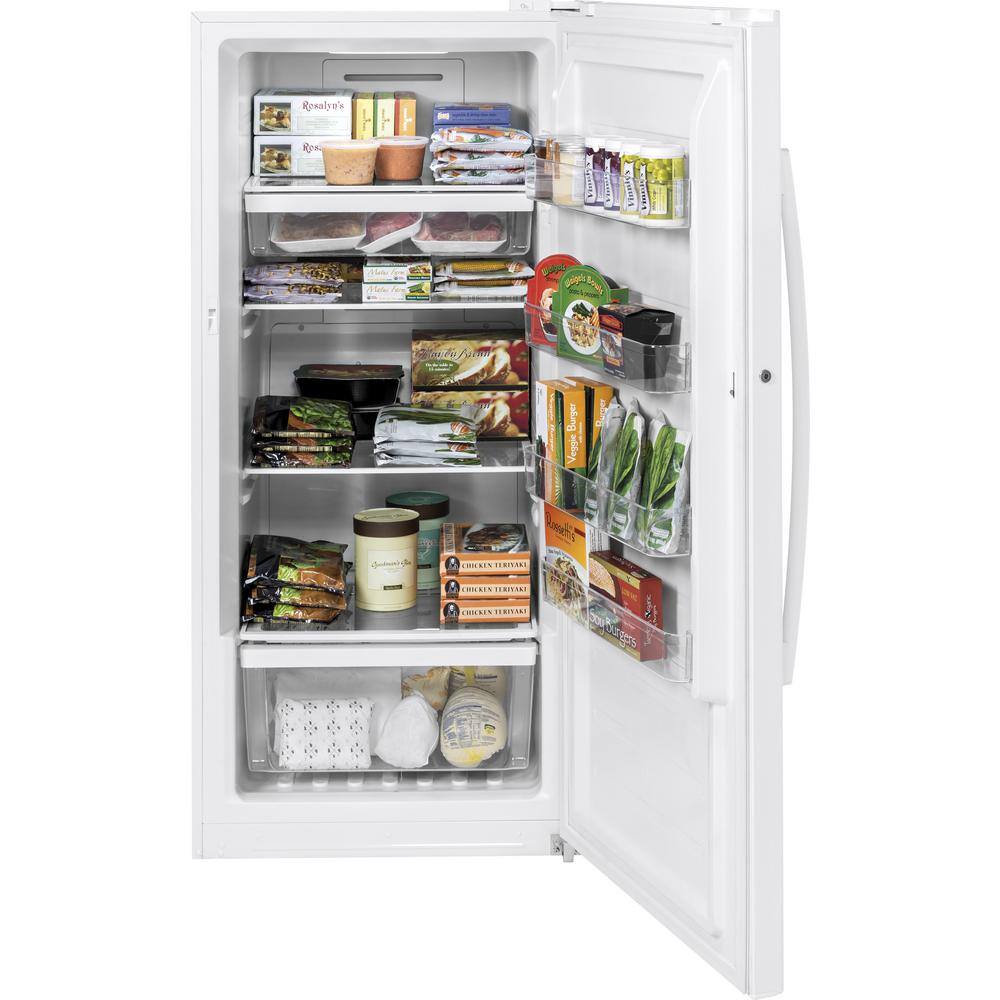
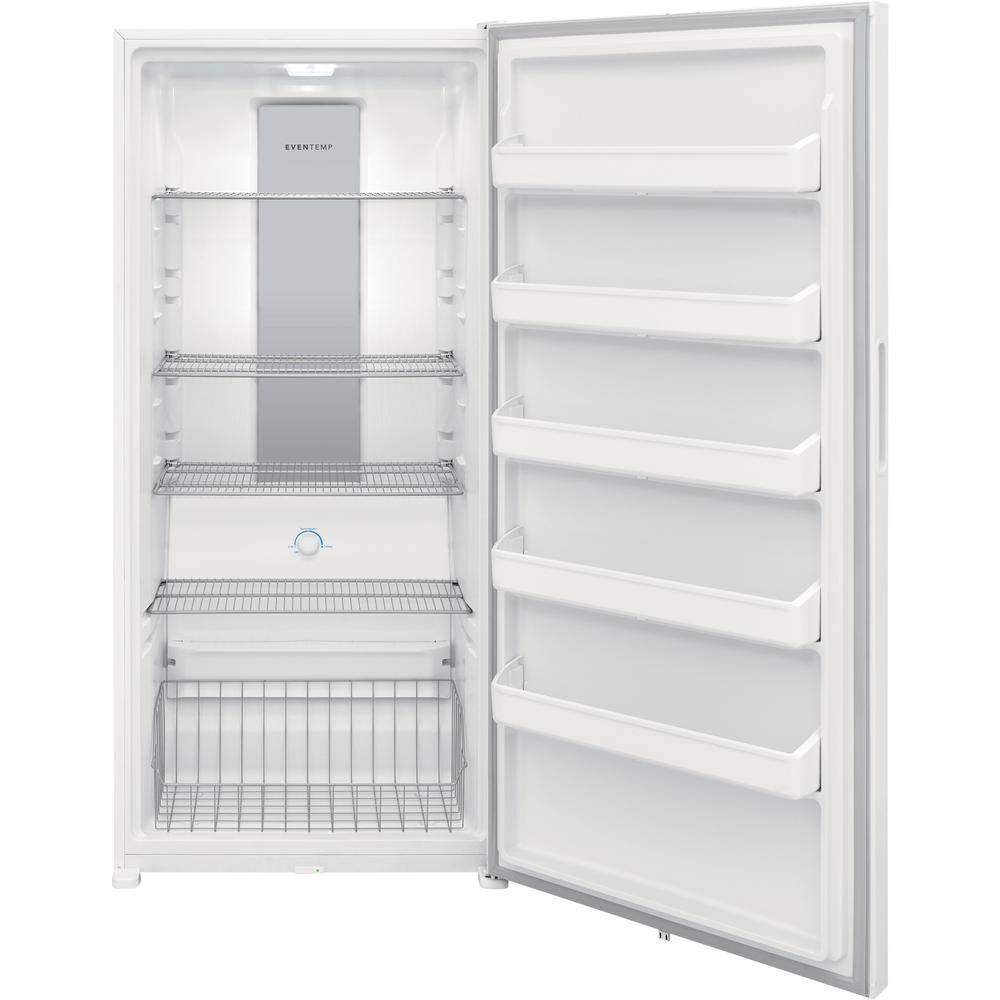
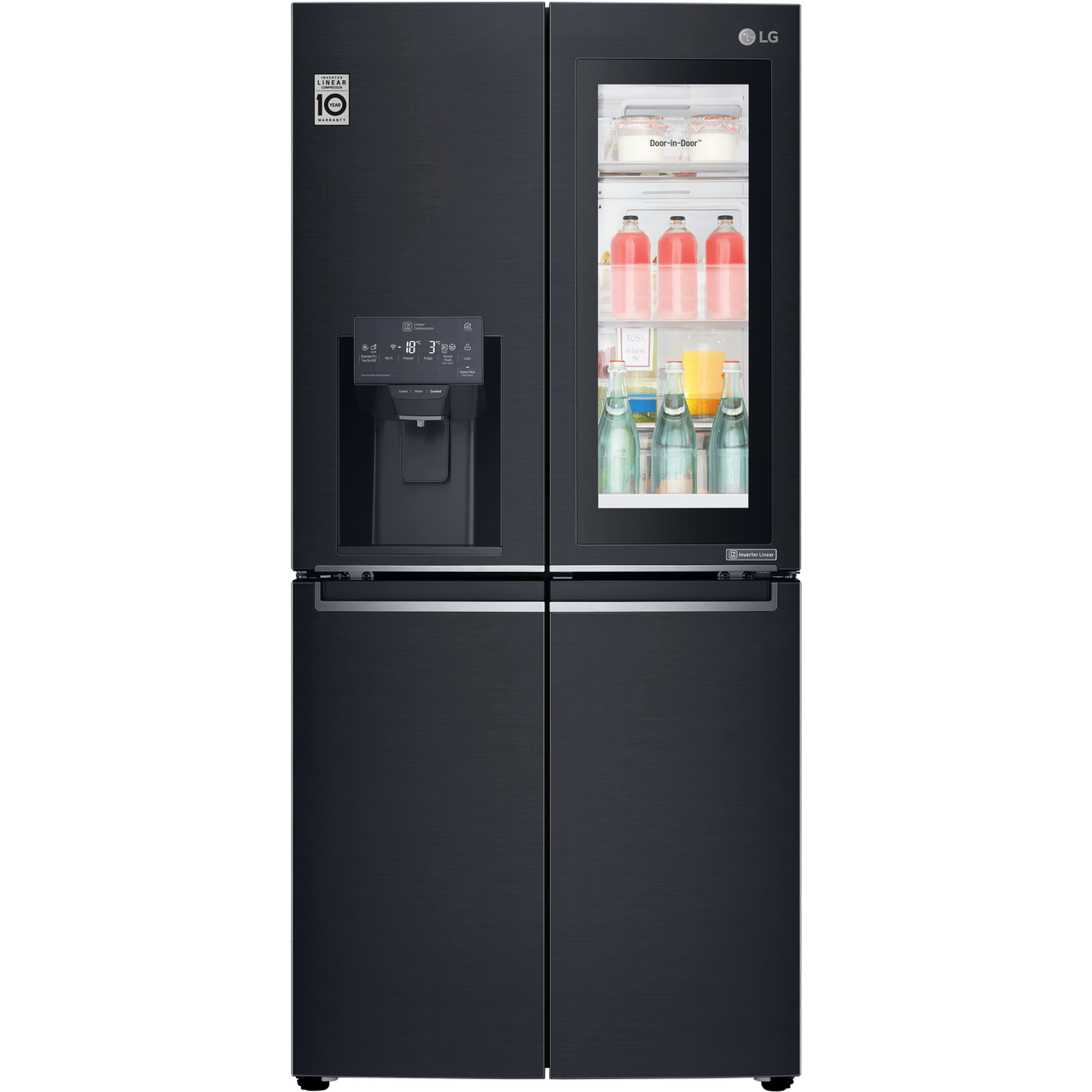
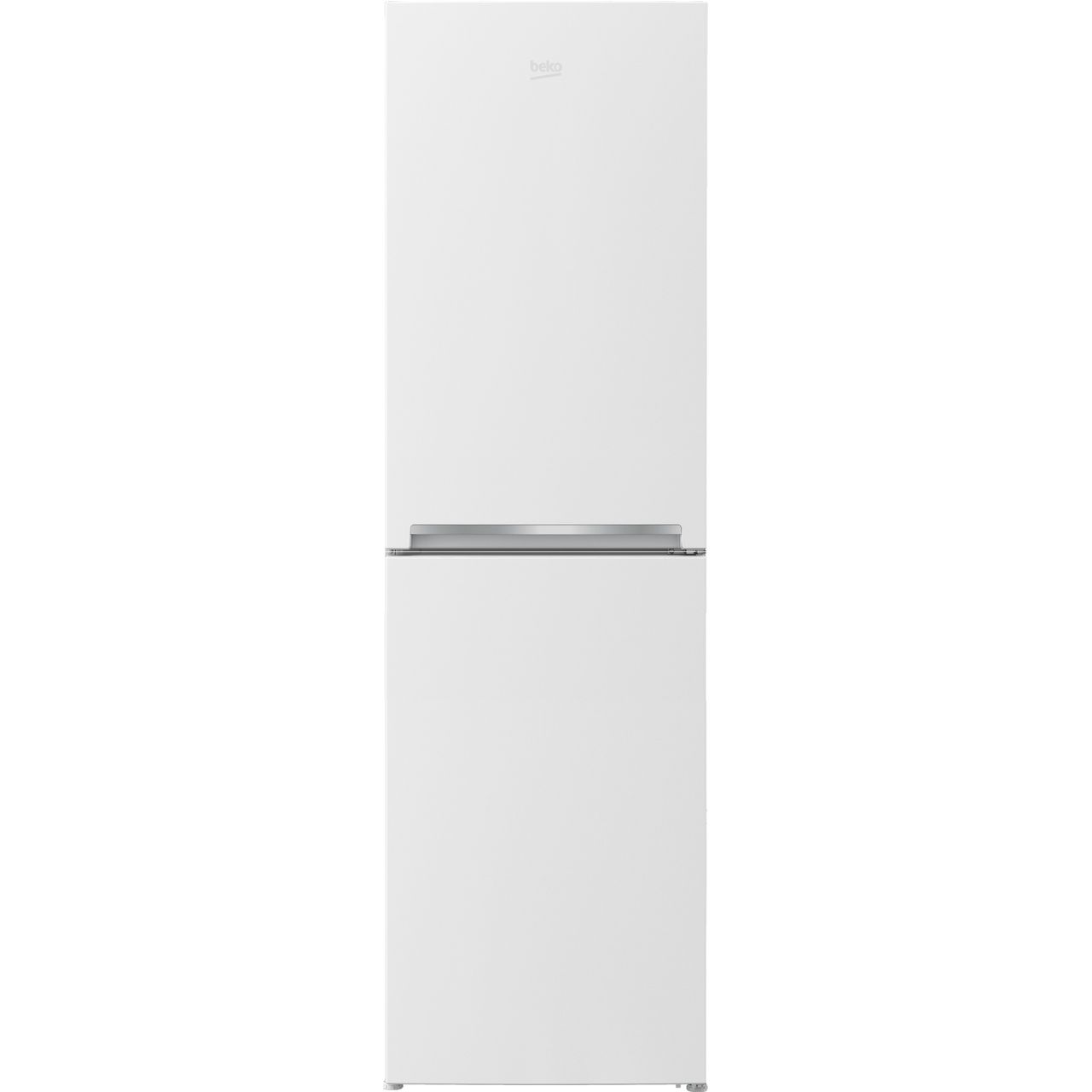
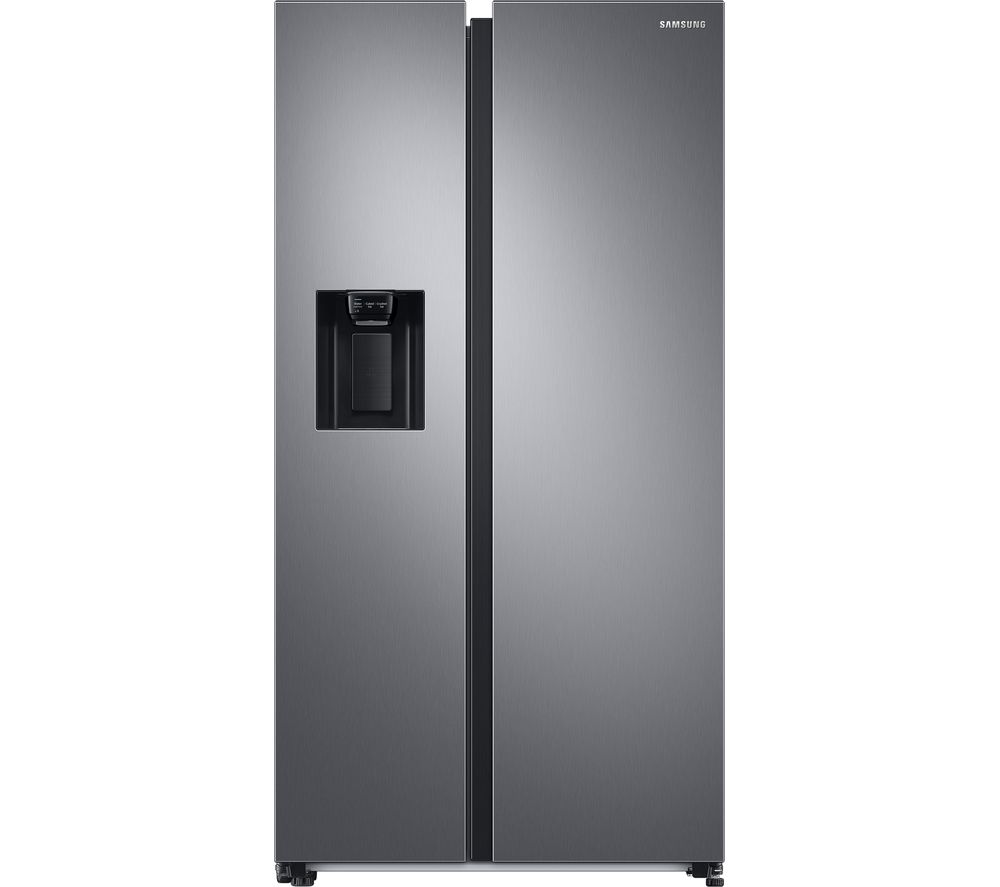
by Arion
Cools down quickly. Shelf arrangement makes it easy to store and locate food. Alarm prevents food loss should coolant system break down.
by Barb
No complaints. Only had it just about 2 months. Sitting in our garage. So far, works great.
by Kenneth
It’s worked great so far. Easy to organize.
by Rich
This freezer was an excellent choice for us. Just what we needed for extra storage for frozen foods. GE makes quality products and I expect many years of trouble free service from this unit.
by Ken
perfect size and like the shelves.
by Jordan
I like the feature of having the inside temp of the freezer on the outside of the door. It’s a perfect size for my needs.
by Sam
Works well just as advertised.